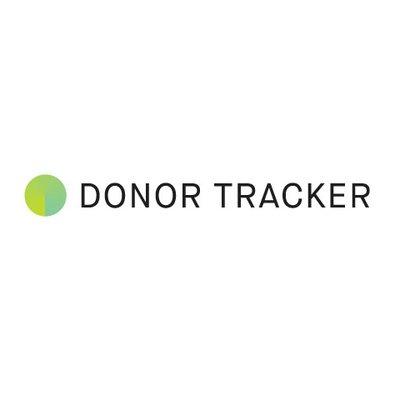Development policy and funding for gender equality and women’s empowerment across 14 donors
This Highlight Story looks at 14 OECD DAC donors and analyzes their strategic priorities and funding in support of gender equality and women’s empowerment. The 14 donors covered are: Australia, Canada, EU institutions, France, Germany, Italy, Japan, Netherlands, Norway, South Korea, Spain, Sweden, United Kingdom (UK), and United States (US).
What are donors’ priorities?
- Donors are increasingly prioritizing gender equality in their development policies. 12 out of the 14 donors profiled have a gender equality strategy in place, and all have launched initiatives targeting women’s empowerment in recent years. However, only two donors – Sweden and Canada – have put gender equality at the heart of their development policies within an overarching ‘feminist’ approach.
- Donors focus on advancing gender equality in similar areas. All 14 donors specify economic empowerment of women and ending gender-based violence as focus areas. Women’s participation in decision making (11 donors), peace and security (11 donors), and sexual and reproductive health and rights (10 donors) are other priorities.
- Gender mainstreaming, i.e. the integration of a gender perspective into all aspects of policy making and programming, is listed as a priority in the strategies of 11 out of 14 donors. A few donors (e.g. France, Japan, and Sweden) have established processes to better track progress in gender mainstreaming. This is a step in the right direction, but more donors need to follow to make gender mainstreaming a reality in all development programs.
How much do donors spend and on what?
- Collectively, the 14 donors spent US $34.6 billion in 2016 on projects that target gender equality as a ‘significant’ or ‘principal’ objective (see pg. 6 for more details on methodology). This corresponds to 28% of their total bilateral ODA (US $124.5 billion; see Figure 1). The largest donors were the US (US $6.6 billion), Germany (US $5.6 billion), the UK (US $5.4 billion), and the EU institutions (US $4.7 billion).
- Considering only ODA that has gender equality as the principal objective, donors spent considerably less: US $4.6 billion in 2016, or 4% of their collective bilateral ODA. The US spent the most (US $2.0 billion) in 2016, followed by the UK (US $603 million), Sweden (US $411 million), and the Netherlands (US $396 million). Italy spent the least in absolute terms (US $16 million), according to the OECD gender marker.
- Donors also differ widely when comparing gender equality spending to their overall ODA budgets. The Netherlands spent the greatest share of its total ODA on activities with gender equality as principal objective (12%), followed by Sweden (11%) and Australia (9%). Three donors (Norway, the UK, the US) spent 5% to 7%, while four donors (Canada, EU Institutions, Korea, Spain, Korea) spent between 2% and 3%. Four donors (France, Germany, Italy, Japan) spent less than 1% of their bilateral ODA on these activities.
- Funding concentrates on a few sectors. Health and population (17%, US $5.9 billion), government and civil society (14%, US $5.0 billion), and education (13%, US $4.3 billion) received most gender-equality targeted funding in 2016 (see Figure 2). Funding trends tend to align with donors’ strategic priorities. For all donors but one, at least two of the three highest-funded sectors were also priorities according to strategy documents.
- Some priorities, such as gender-based violence and economic empowerment cut across sectors. This makes it difficult to accurately track spending. For example, initiatives to eliminate gender-based violence are found within humanitarian aid, as well as within health projects. Tracking could be improved if donors systematically formulated strategic priorities that are also backed by transparent data reporting mechanisms.
How is funding tracked?
- All 14 donors use the OECD gender equality policy marker to some extent to assess their bilateral ODA. On aggregate, 87% of the donors’ ODA in 2016 was screened against the gender equality marker. This is positive, as the use of the marker is the basis for comparing gender equality-targeted spending across donors.
- However, application of the gender equality marker varies between donors. Seven donors (Canada, EU Institutions, Netherlands, Norway, South Korea, UK, US) screen all bilateral ODA against the marker. Four donors screen between 70% and 96% of their ODA (Australia, France, Japan, Spain); three donors (Italy, Germany, Sweden) screen only 70% or less. These differences create an incomplete picture of how much funding is available.
- Inconsistent reporting practices are another challenge. For example, the US originally reported very low figures on gender equality-related spending to the OECD for 2016 (US $48 million). This data was updated in July 2018 to reflect much higher numbers (US $6.6 billion), making it challenging for advocates to use reliable data.Discrepancies in the way the marker is interpreted also make it difficult to compare donors. For example, South Korea screens all its bilateral ODA against the gender marker but finds that 89% of ODA goes to projects that have no goals related to gender equality, and that only 11% of projects are gender-equality related. This contrasts with Australia, which screens only 81% of its ODA but determines that 58% of it goes to projects that are gender-equality related. More consistent application of the gender equality marker is urgently needed to advance tracking of SDG 5 on gender equality.
Corporate Author: Donor Tracker
